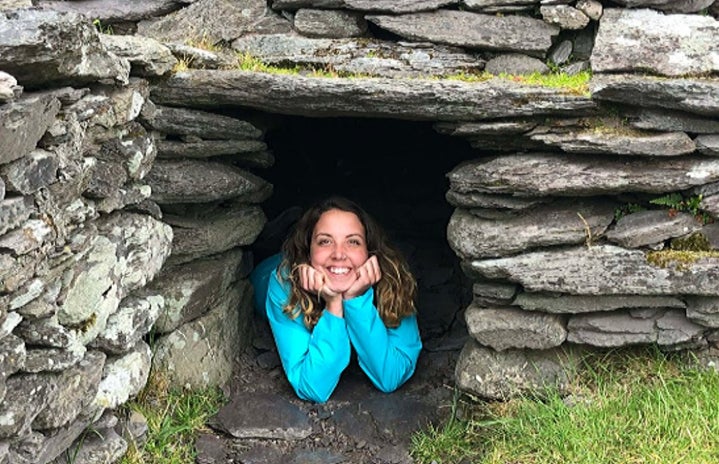With a culture deeply rooted in its ancestry, remnants of history cover Ireland. From crumbling castles and forts to old battlegrounds, almost every sight in Ireland tells a story of what shaped the country. In the mix of all the stories, there is one that digs deeper (pun intended).
Souterrains, built and used for the larger part of the Iron Age, are underground tunnels found mostly in castles and forts. Used for storage, they were built in different lengths and sizes. However, they also came in handy for self-preservation. When impending attack, children and the elderly would hide in the souterrains. The able would then set the town on fire and retreat. As invaders closed in, they would see the fires and assume the town had already been pillaged and leave. The able would return, and those hiding in the souterrains would be rescued. The towns would then be rebuilt. When the Irish built souterrains, they meticulously lined them with stones and extra safety measures to ensure they would not cave. Many are still intact today, and you can actually crawl into them. Most are large enough to crawl through or squat in and don’t go back very far.
However, not all are so small. Legend has it that the souterrain at Fort Dun Aengus in County Galway is one of the longest souterrains and used to connect to a nearby fort. This souterrain still stands, and I believe it is one of the most magical and impressive tunnels known to man.
While I travelled through Ireland, I made it my goal to explore every souterrain cleared for safety. Out of the underground tunnels I was able to explore, the legendary tunnel in Fort Dun Aengus left the biggest impression on me. Also, as I was the only one in my group willing to go all the way in, that souterrain remains a special and wholly unique memory.
The entrance of this souterrain is about half the size of the one pictured. To get into it, I had to awkwardly position myself in a small hole and army crawl inside. Once inside, there is a sharp turn to the right and complete darkness. The height of the tunnel stays about 1 to 2 feet tall for about 10 feet. Once I crawled through the beginning strip, the tunnel opened and I was able to crawl. The rest of the tunnel runs straight into a stone wall, another 5ish feet away. There, it looks like the tunnel ends, but (and this is my favorite part) when I looked to my right, there was a small arched doorway, lined with stones in a hole 4 feet underground. Through the doorway, the tunnel opens into the wall of the fort, now with standing room. The souterrain entrance was in the middle of the fort, but I had now traveled to the outer wall, all underground. A small windowsill and window overlooked the land around the fort. I was able to stand (I’m 5’3”) and look out at the Irish countryside from an underground window. (Isn’t that so stinking cool?? Keep in mind, these tunnels are thousands and thousands of years old.) But, there is more. On either side of me, stone steps branched into two more tunnels. Both of those tunnels end after about 5 feet, but the idea of them is still amazing.
I felt like I was gone for hours. I was completely awestruck by the ingenuity and sheer experience. In reality, I was gone for, at maximum, ten minutes, and my professors, who just watched me crawl into a hole and not come back out, almost had heart attacks. They’re not sold on the legend that the tunnel used to connect to another fort, but I sure am.



